
Marketing Ethics: Persuasion vs. Manipulation
The debate over “white hat” vs. “black hat” tactics in SEO seems to resurface every few months, followed soon after by a debate over whether those labels or the debate itself are even worth having. I thought it would be useful to step back a bit and look at the broader issues of ethics in marketing.
As marketers, our job is to persuade people, whether it’s to choose a certain product or buy it from a certain vendor. It’s not always clear, though, when persuasion becomes manipulation. I’m going to explore 5 scenarios in a white-board style format (read that: “crudely illustrated for your amusement”).
Scenario 1: Simple Alignment
The first scenario is what I’ll call “simple alignment” – the Customer wants X, your Client (employer, etc.) sells X, and you work to facilitate the process:
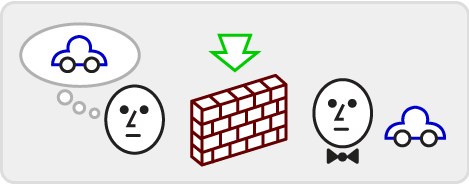
The Customer is on one side of the wall, dreaming of a new car, and your client is on the other side, trying to sell that car. You (the green arrow) come in to bring the wall down. Alignment could just be the act of bringing Customer and Client together (like driving relevant traffic to a site). The end result is win-win.
Scenario 2: Simple Choice
In the “simple choice” scenario, the Customer wants either X or Y, but hasn’t made up their mind. So, you nudge them to make a choice that fits your objectives:
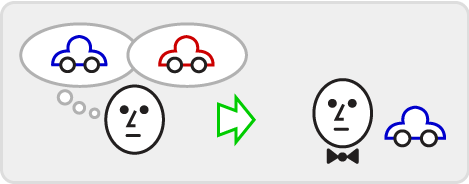
Is it unethical? On the one hand, the Customer wanted X or Y, so nudging them toward X is hardly a heinous crime. If you persuade them with features and benefits, this could be completely win-win. If you outright lie to drive them toward your Client, it’s a very different story.
Scenario 3: Competitive Choice
Scenarios (1) and (2) are based in an imaginary world where only one person actually sells anything. What if the Customer wants X, but your Client has a Competitor, and you steer the Customer toward buying from your Client?
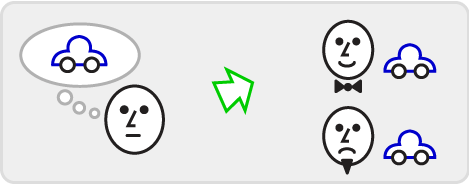
Obviously, the ethics of this situation can get complicated fast. Let’s say your Client makes 98% of their revenue selling pirated Justin Bieber CDs to al Qaeda, while their Competitor makes its money selling double-rainbows to puppies. I’d probably rather buy from your Competitor. On the other hand, as long as we’re not lying about our Client, the Competitor, or the products, this is still essentially an act of persuasion. The Customer wanted X and they ultimately bought X.
Scenario 4: Unknown Desire
Sometimes, Customers have no idea what they want – not in the sense of choosing between 2 or more options, but in the sense of not even knowing that an option exists:
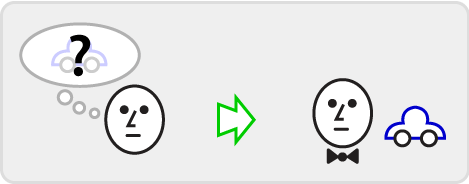
In some ways, this is the essence of much of modern marketing – it’s less about pushing us to choose from alternatives, and more about persuading us to want things we didn’t know existed. The iPhone is a great example – I didn’t know I wanted one until I tried it out. Until then, I had been suffering the delusion that my LG clamshell phone with no internet was all that I needed.
In all seriousness, this is a tough one. It’s the heart of modern consumerism, which many people would certainly say has gotten out of control. Is fulfilling an unknown desire inherently bad? No, of course not. Is manipulating people into wanting something by playing on their envy, fear, doubt, and uncertainty unethical? That’s a very different question.
Scenario 5: Altered Decision
Finally, what if we sell someone something they didn’t originally want at all? The Customer is looking for X and you convince them to buy Y:
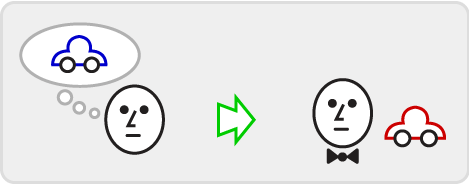
In some cases, this may be like Scenario (4). The Customer thought they wanted the blue car until they saw it in red and loved it. In other cases, you may be aggressively pushing them to make a decision they later regret. Somewhere in between is the boundary between persuasion and manipulation.
It’s All About Intent
My point is simple – the ethics of marketing get complicated fast, and a lot of it boils down to intent. This is what makes Google’s job so hard – they can’t reach into our brains to see what we’re scheming, so they have to infer intent from action.
Take paid links, for example. Buying an ad to drive traffic to your site is perfectly acceptable to search engines. Buying an ad to build a juicy link back to your site and manipulate your ranking violates Google’s guidelines. If no one ever bought an ad just for SEO purposes, there would be no need to nofollow links. Since Google can’t judge our intent and paid links were abused, they have to assume that all paid links are suspect.
I’m not defending Google’s stance or claiming that Google’s guidelines are the same as ethical behavior. I’m simply saying that these situations are a lot grayer than we sometimes like to believe, especially when you consider the entirety of the internet.
Why Does It Matter?
So, why should this matter to you? Even if you’re not that concerned with ethical marketing, I think there’s something else at play here, and it directly affects your bottom line. Look at the 5 scenarios again:
- Simple Alignment
- Simple Choice
- Competitive Choice
- Unknown Desire
- Altered Decision
What’s the easiest type of sale to make? Usually, it’s going to be Scenario (1). You just need to help the Customer find your Client, or maybe you need to improve your CRO to bring down a few walls within your site. The Customer already wants what you’re selling.
On the other end, getting someone to completely change their mind may not just be unethical – it’s also extremely difficult. If you find yourself constantly having to change people’s minds, even to the point of manipulation, you may be targeting the wrong market.
It’s funny that Scenario (4) seems to be the current Holy Grail of marketing. Apple is the poster child for selling us things we didn’t even know we wanted. There are, admittedly, tremendous advantages – being the first to market means you get a great head-start and can put up barriers to entry. For most of us, though, it’s just not necessary or cost-effective. There may be plenty of Scenario (1) and (2) clients out there, and your money could be better spent finding them.
This post was inspired by a conversation with a UX colleague, Harry Brignull, and his work on what UX folks have come to call “Dark Patterns”. This post isn’t really about dark patterns, but it’s a pretty cool concept (and very cool name), so I’d encourage you to check it out.



Comments
Please keep your comments TAGFEE by following the community etiquette
Comments are closed. Got a burning question? Head to our Q&A section to start a new conversation.